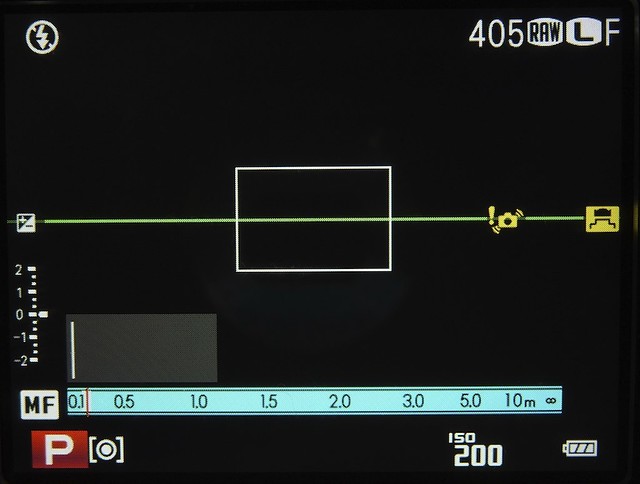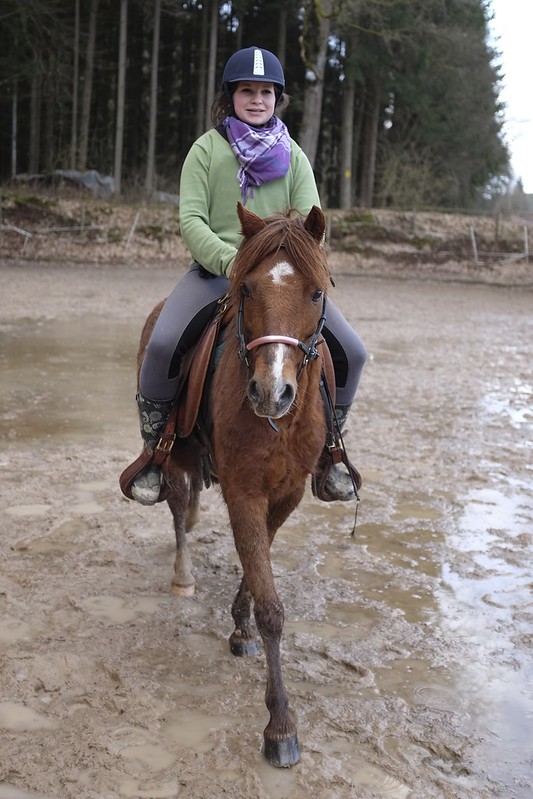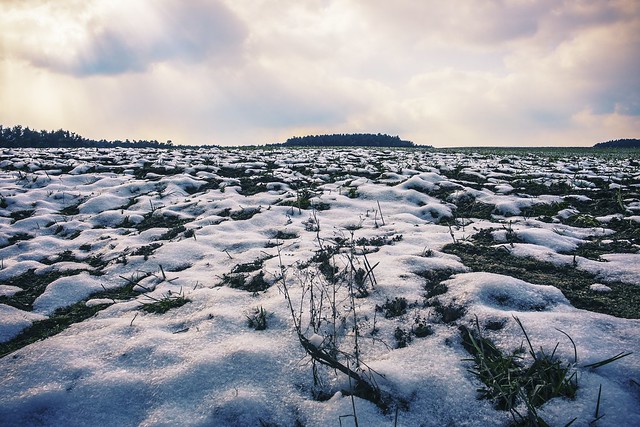X100S vs. X100
Talk to Rico (questions & feedback) – Sample images set – Comparison images set
The X100S is an evolutionary camera, improving the classic X100 without taking away what most users valued in the first place. Sales of the original X100 (about 130,000 units globally) did beat expectations. The camera also inspired competing manufacturers to enter the mirrorless fixed-lens compact market, and it served as a blueprint for Fuji’s own line of mirrorless system cameras. Without the X100 and its (then revolutionary) hybrid viewfinder technology, there wouldn’t be an X-Pro1. Make no mistake: The X100 is the foundation of Fuji’s X series.
Alas, it’s foundation with some flaws—many of which have been addressed with numerous firmware updates. However, firmware can’t fix everything, especially not hardware oversights, and even though the X100S very much looks like an “old” X100 at first and second glance, it is a different and better camera thanks to extensive user feedback.
Let’s have a look at some of the changes and improvements that have been made regarding operation, features and design of the new X100S vs. the classic X100.
Speed
The X100S is not only faster, it’s also more responsive. Startup time and writing speed to SD cards have been accelerated. Of course, you need to use the fastest SD cards available (such as SanDisk Extreme Pro UHS-1 95 MB/s) cards to fully take advantage of this feature. The X100S shoots a maximum of 6 frames per second (vs. the X100’s 5 fps) in FINE+RAW, with no actual limit in the number of frames that can be continuously recorded. The X100S never locks up in burst mode, it just slows down. Unlike the X100S, the classic X100 needs an actual break after 8 frames and locks up until all 8 images have been transferred to the card.
With the X100S, the shooting interval in single frame (still image) mode has been reduced from 0.9 to 0.5 seconds, and you can immediately playback an image directly from the buffer, even while the camera is still saving shots to the SD card in the background. Image display (preview) options have been changed from 1.5 and 3 seconds to a more suitable 0.5 and 1.5 seconds. Of course, “off” and “continuous” preview modes are still available. Oh, and the eye sensor now also works when image preview is engaged.
Autofocus is has become more responsive, too, both in the classic contrast detection (CDAF) and even more so the new phase detection (PDAF) mode. On-sensor PDAF is now available in an focusing area roughly as large as the center 9 AF fields, and it will automatically engage at suitable light levels of about 5 EV or higher. PDAF is also available in Movie mode (which now offers Full HD at up to 60 fps), as are all three focusing modes (AF-S, AF-C and MF). In manual focus (MF) mode, the MF ring is more responsive and actually quite usable. The AF distance range for the EVF and LCD has been improved from 40cm-∞ (X100) to 21cm-∞ (X100S), and the shooting range in the OVF has been expanded from 80cm-∞ to 50cm-∞, so you will have to switch to macro mode less often.
Like the X20 and X100 (and X-Pro1 and X-E1 with current firmware), the X100S operates with AF priority: When you fully depress the shutter button in one swift motion (vs. first half-pressing it to lock focus and exposure), the camera will take the picture immediately after it has acquired focus. This “trick” can be used to catch moving subjects, like this pony trotting towards the camera:
Focus was directed at the horse’s head, with open aperture (f/2) to minimize the depth-of-field (DOF). As you can see in the cropped image above, the pony’s head is perfectly in focus. Click on the image for larger viewing options.
Split Image
Another notable improvement are the camera’s new manual focus aids: Digital Split Image and Focus Peaking. The former uses PDAF pixels on the sensor to simulate split image focusing as you may know it from older MF SLRs. Click here for a demo: http://youtu.be/_fJDX1hzUIg. The latter, called “Focus Peak Highlight”, delivers classic focus peaking over the entire image frame by outlining/highlighting those areas of the image that are currently in focus. This is a software feature, so I’m confident we will also see it in future firmware releases for the X-Pro1 and X-E1. Click here for a demo: http://youtu.be/PMdQpgOzd4o. By pressing the command dial for about a second, you can easily rotate between the different manual focusing aids.
Smart
The X100S is smarter than the classic X100. For example, it remembers your in-between aperture (like f/6.4) and shutter speed (like 1/80s) settings even after you switch-off the camera. Once you switch it back on, it will continue with those settings. In full manual mode, the Live View display will now actually simulate the brightness of the resulting image once you half-press the shutter button. Auto-ISO is now part of the ISO menu, it works up to ISO 6400 and it allows you set the ISO floor, maximum ISO and minimum shutter speed. Even better, these Auto-ISO settings can be stored in custom user profiles, so any of the camera’s three custom profiles can contain a different Auto-ISO configuration.
When you update the firmware, the X100S will remember the camera’s settings instead of performing a reset like the classic X100 did. Also, inserting a memory card that hasn’t been properly unmounted from an Apple iPad or Macintosh computer won’t slow down the startup of the camera, anymore. Fuji has also improved intelligence and accuracy of Auto Exposure (AE) metering (especially Multi mode) and Auto White Balance (AWB). Take a look at these two ISO 6400 shots (taken with AE and AWB). One is from an X100 and one from an X100S:
Whoa! Speaking of AWB: White Balance Shift is now available in every shooting mode (even Movie or Motion Panorama). There’s also direct support for Eye-Fi cards and an odometer-like frame counter (Fuji rates the shutter beyond 100,000 shots). There’s now an option to connect an external microphone (MIC-ST1) to the camera’s tiny USB port, and the input levels for both internal and external microphones can be manually adjusted in the camera menu.
Simple
The X100S offers a significant number of small and simple improvements that quickly add-up to an “all new” camera. For example, a protective coating on the surface of the viewfinder window is supposed to prevent fingerprints and smudging, and the shape of the viewfinder window has been changed to prevent dust build-up. The strap attachment rings are now double coated with a stainless steel layer to reduce wear and tear. The shapes of the Viewfinder Lever, the OK button and the Q button (formerly the RAW button) have been improved to enhance their usability, and the layout of the Focus Mode Switch has been changed to “MF/AF-C/AF-S”, which is more useful than the “MF/AF-S/AF-C” layout of the classic X100. The improved Exposure Compensation Dial has more torque, so it is harder to involuntarily rotate it, and the layout of the Shutter Speed Dial has been modified to better separate A(utomatic) mode from manually set shutter speeds. However, the most important change in this department may be swapping the AF and the DRIVE buttons. Changing AF fields is now much more convenient and can be performed solely with the thumb of your right hand, while the left hand is supporting the camera.
Another major improvement is the higher-resolution EVF with 2.35 million dots, now matching the EVF of the X-E1. However, there’s some blurring in the EVF and LCD display while panning the camera at very low light to quickly track laterally moving objects—even when the shutter button is half-depressed. The classic X100 does not exhibit this behavior, but practically, one would use the perfectly lag-less OVF for this kind of shot, anyway.
By the way, Fuji redesigned the EVF and LCD displays to reduce information clutter and scene obstruction. Take a look:
X100:

X100S:

Pressing and holding the Q button for a few seconds brightens the LCD and EVF, a shortcut that comes in very handy in glaring ambient lighting. Tapping the Q button opens the new Quick Menu where one can quickly set or select all common JPEG parameters (including white balance), ISO and dynamic range options, the self timer, AF modes, flash modes or LCD/EVF brightness. Speaking of flash modes: Everything, including settings for third-party external flash units, is now part of one single flash menu, and the regular Shooting, Playback and Setup menus of the X100S are now multi-tabbed to make it easier to navigate through them.
There are two new film simulation modes: Pro Neg. Std and Pro Neg. Hi. Both are great for portraits as they deliver pleasant skin tones. Speaking of which: Fuji enhanced the gradation of some of its film simulations, notably Provia. Provia’s shadow contrast is now pretty much identical to Astia’s, resulting in crisper images. In order to simulate the “old” Provia, you may try to set Shadowtone to -1 (medium soft).
There’s also a simple multi-exposure function to merge two consecutive shots into a composite, and there are several effect filters such as Toy Camera, Miniature, Partial Color, High-Key and Soft Focus. Like the X20, X-Pro1 and X-E1, the X100S also offers a new aspect ratio 1:1 option for shooting square images.
Sensor
For some users, these above-mentioned features alone could justify upgrading from a classic X100, but there is more, of course: The X100S contains an APS-C-sized X-Trans sensor with increased resolution (16 MP vs. 12 MP). Like in the X-Pro1 and X-E1, this sensor can do without an optical low-pass filter thanks to its more random 6×6 pixel color filter pattern. Fuji also claims a much improved signal-to-noise ratio, and indeed: The X100S is fully usable up to ISO 6400.
Let’s take a look at two sample images, one from the X100S and one from the X100, both developed in-camera with matching white-balance and standard noise reduction settings.
Here’s the X100:
And here’s the X100S:
As usual, click on the images for additional remarks, EXIF information and a choice of high-res options, including full-size.
Since Adobe Lightroom/ACR finally offers decent RAW support for X-Trans sensors (it always offered great support for the X100), we can also compare noise and detail using that external RAW processing option. I applied Lightroom’s standard import settings for noise reduction and sharpening, and I adjusted the white balance of the X100 shot to the settings chosen by the X100S. I also adjusted exposure and activated Adobe’s lens profile in the X100 shot.
Again, click on the images for larger views. But honestly, you can already spot some differences here—in sample images as small as 640 x 427 pixels! Apart from noise, artifacts and banding, the X100 also displays a tendency to a cooler and slightly more magenta look than the X100S, even with identical white balance settings.
Please don’t use Adobe’s dedicated X100 lens profile for shots that were taken with an X100S. Like other current Fujifilm cameras, the X100S stores lens correction profiles as metadata in the RAW files, which are automatically interpreted by RAW converters like Lightroom, Silkypix or Capture One. Adding Adobe’s custom X100 lens profile would effectively add up two lens profiles and thus correct an already corrected image. That’s definitely overkill!
Like the X20, the X100S features a new and faster image processor, dubbed “EXR Processor II”. In the X100S, this processor outputs larger RAW files with 14 bits of color depth. According to my Mac (OS X 10.8.3), an X100 RAW requires 19.9 MB of hard disk space, whereas an X100S RAW file occupies between 33.5 and 33.9 MB (yes, the size is somewhat variable). Keep this in mind when purchasing new SD cards and allocating storage space on your computer or on backup media. A 16 GB SD card is good for 405 FINE+RAW images shot in aspect ratio 3:2 at size L.
Another feature of the new processor is the so-called Lens Modulation Optimizer (LMO) that is supposedly reducing diffraction effects at small apertures by means of sophisticated deconvolution algorithms. Unfortunately, this feature only works with JPEGs coming from the camera. In theory, Fuji could also store LMO data as metadata in the RAW file (for external RAW converters to interpret and apply), but as of now, that’s not the case.
Here’s a series of SOOC JPEG shots taken at f/8, f/11 and f/16 with the X100S set to minimal noise reduction (-2):
Here’s the same scene shot with my classic X100, also at f/8, f/11 and f/16, with NR -2 and Shadow Tone +1 (to match the “new” Provia):
Click in the images for larger viewing options. Once again, we see that the X100 offers a “cooler” tone and white balance. As for recognizing the effect of the new LMO, I leave that happily to you.
Shall I upgrade?
For me, the answer to this question is clearer than in last week’s “X20 vs. X10” comparison. I can hardly think of any situation where I’d prefer using my classic X100, when I could also use a new X100S. Don’t be fooled by the rather subtle changes on the outside—on the inside, the X100S is an all-new camera: it is faster, more responsive, easier to handle and simply more convenient than its predecessor. It delivers better exposure and AWB, more resolution, improved colors, and it is significantly more capable in high-ISO situations. It’s also compatible with legacy accessories such as Fuji’s wide-angle conversion lens ([shoplink 9132]WCL-100[/shoplink]), TTL flash units, lens hoods or (protective) filters, batteries and chargers.
While I intend to use my proven [shoplink 8898]X10[/shoplink] in concert with the new [shoplink 8620]X20[/shoplink], now is the time to retire my beloved classic [shoplink 9135 ebay]X100[/shoplink].
Click here for my slowly but surely growing set of X100S sample photos.
Click here for the full set comparing different aspects of the X100S and the X100.
Please scroll to the bottom of this post if you’d like to consider reading my book “Mastering the Fujifilm X-Pro1” in English or German.
X100S: BHphoto / Adorama / AmazonUS / AmazonDE / AmazonUK / AmazonITA / DigitalRev / your ebay / your Amazon
For your convenience, here’s a TOC with links to my previous X-PERT CORNER articles:
- X20 vs. X10
- RAW, JPEG, Silkypix and “Fuji Colors”
- Adapting Third-Party Lenses
- RAW for JPEG Shooters…
- Tips for Updating your Firmware
- How to Clean the X-Trans Sensor
- Using the XF14mmF2.8 R
- Decoding XF18-55mmF2.8-4 R LM OIS
- Comparing RAW converters: JPEG vs. Lightroom, Capture One, Silkypix & RPP
- XF14mmF2.8 R appears to be almost distortion free
- How to Expand Dynamic Range
- How to Use Extended ISO
- EXR, anyone?
- Capture One – When the Going Gets Tough…
- Using Shooting Profiles and the Quick Menu
Rico Pfirstinger studied communications and has been working as journalist, publicist, and photographer since the mid-80s. He has written a number of books on topics as diverse as Adobe PageMaker and sled dogs, and produced a beautiful book of photographs titled Huskies in Action (German version). He has spent time working as the head of a department with the German Burda-Publishing Company and served as chief editor for a winter sports website. After eight years as a freelance film critic and entertainment writer in Los Angeles, Rico now lives in Germany and devotes his time to digital photography and compact camera systems. His book “Mastering the FUJIFILM X-Pro1” (Kindle Edition) (Apple iBook Store) (German version) is available on Amazon and offers a plethora of tips, secrets and background information on successfully using Fuji’s X-Pro1 and X-E1 system cameras, lenses and key accessories.




















